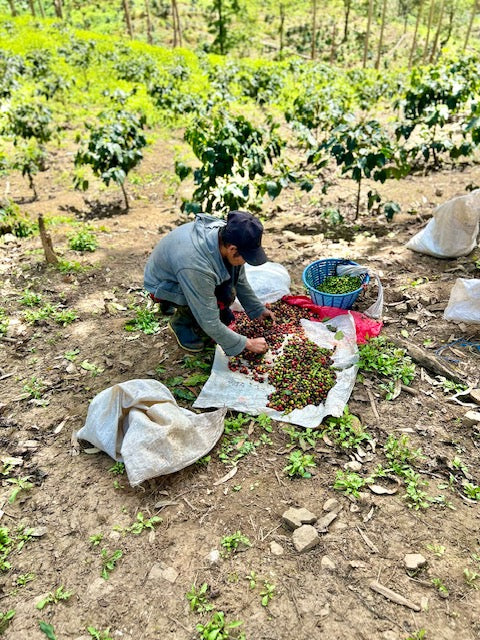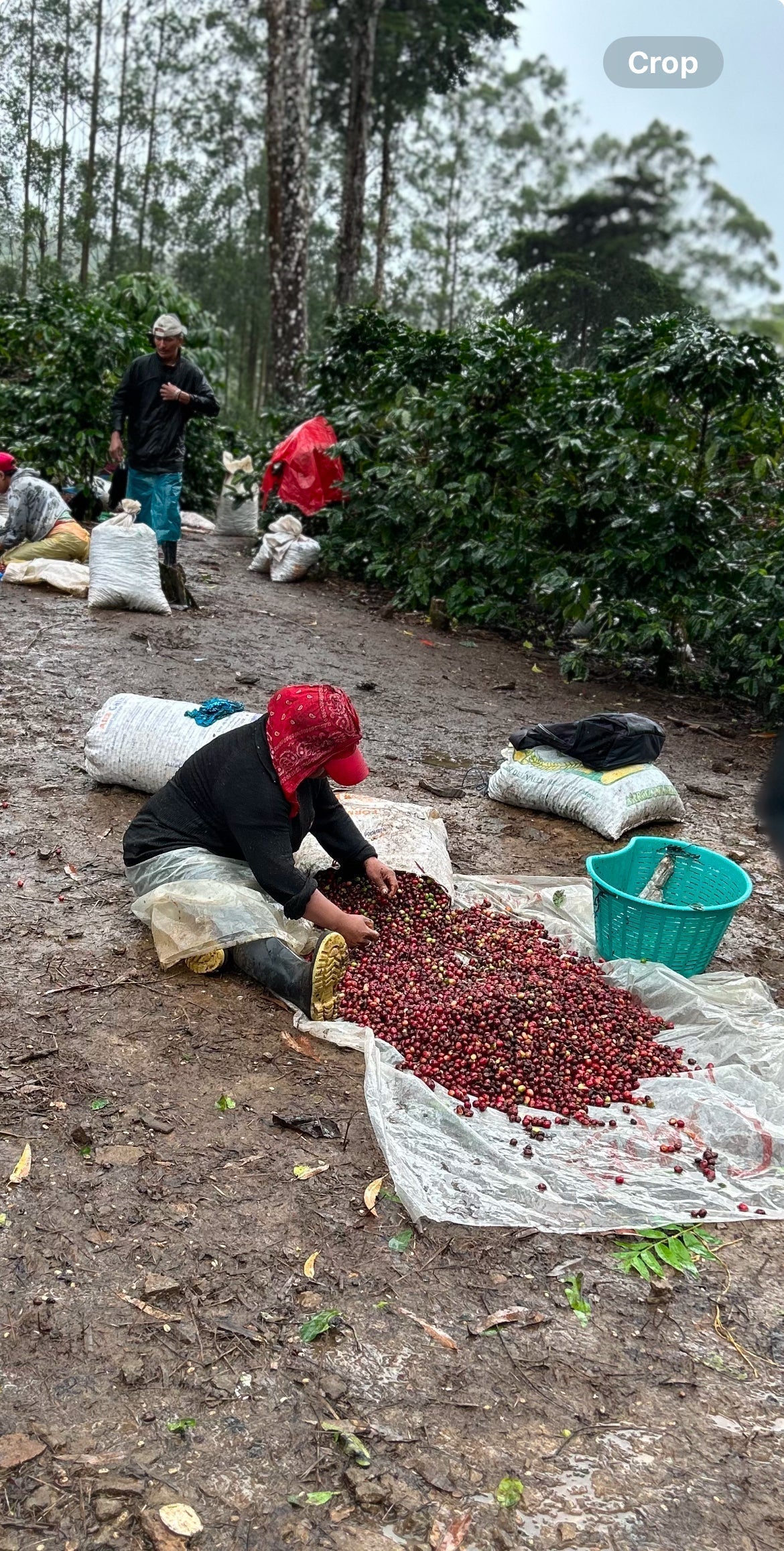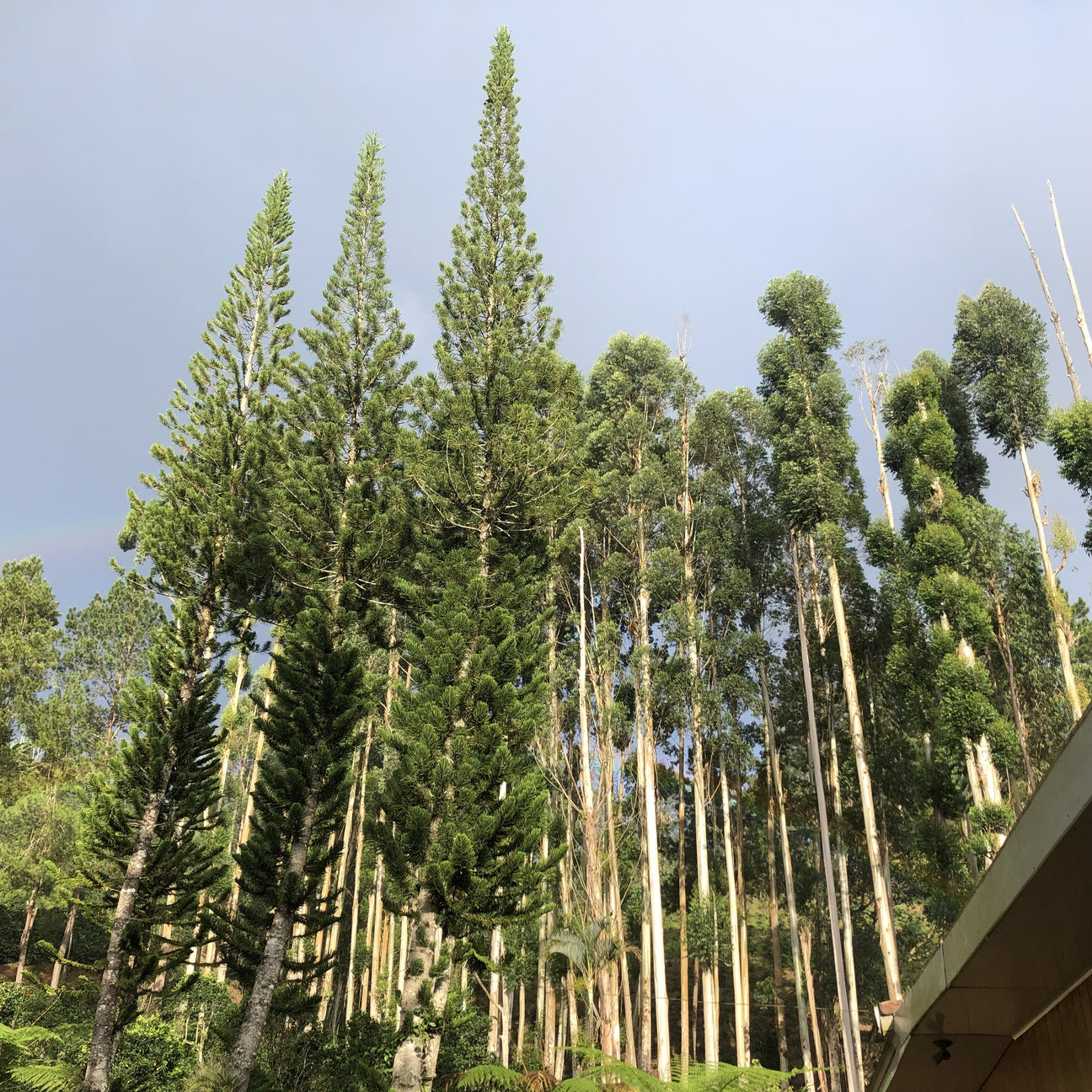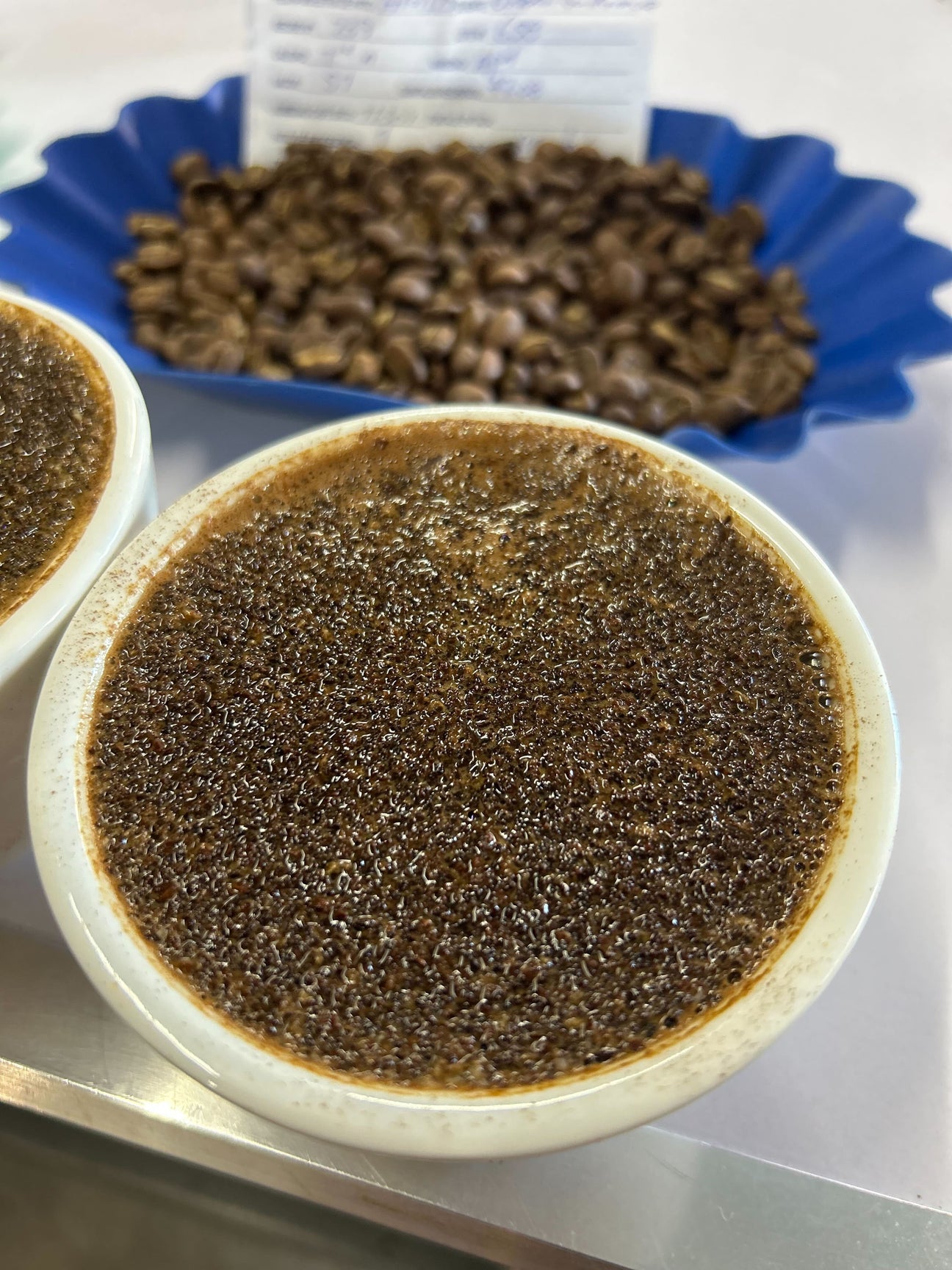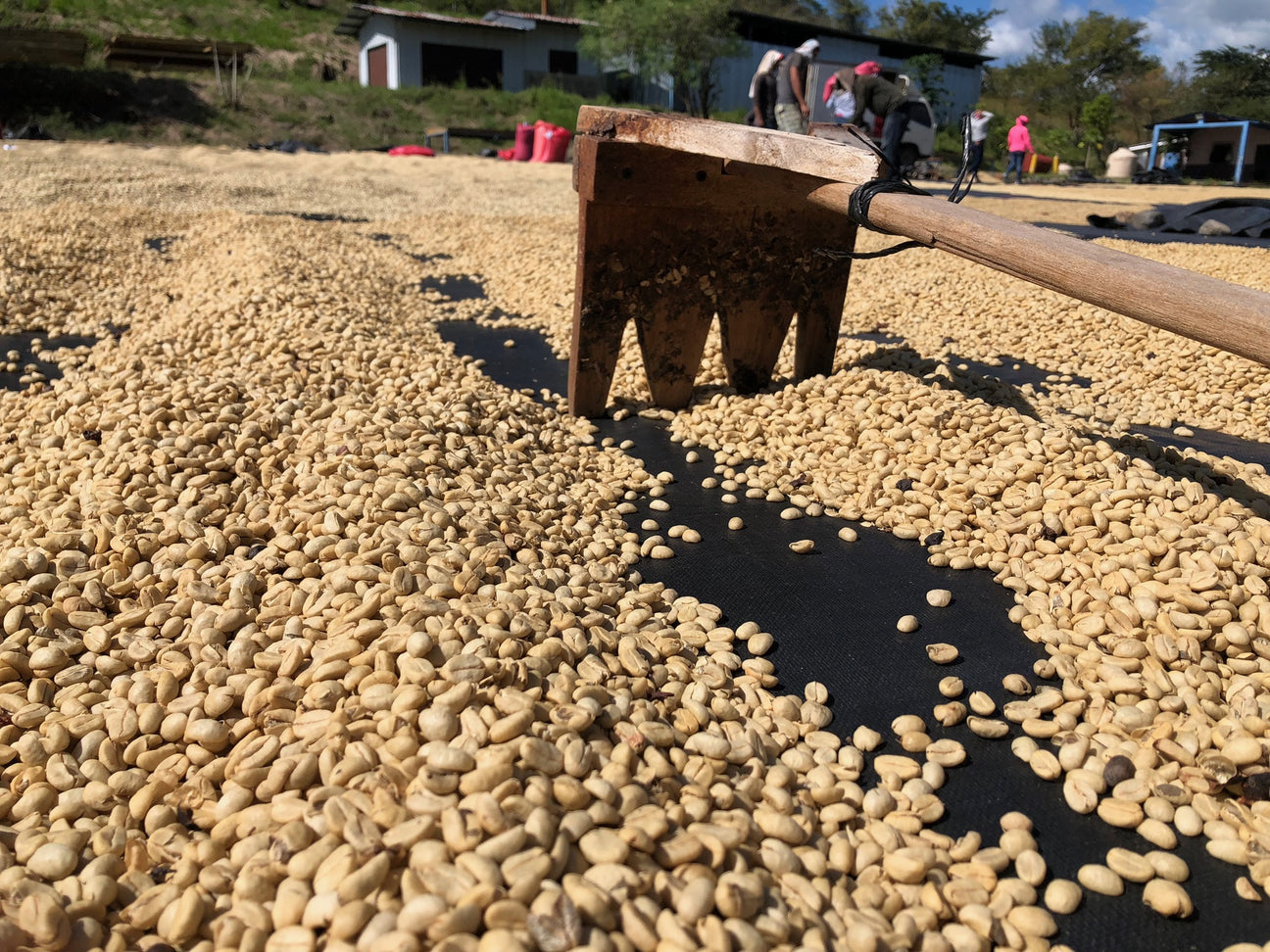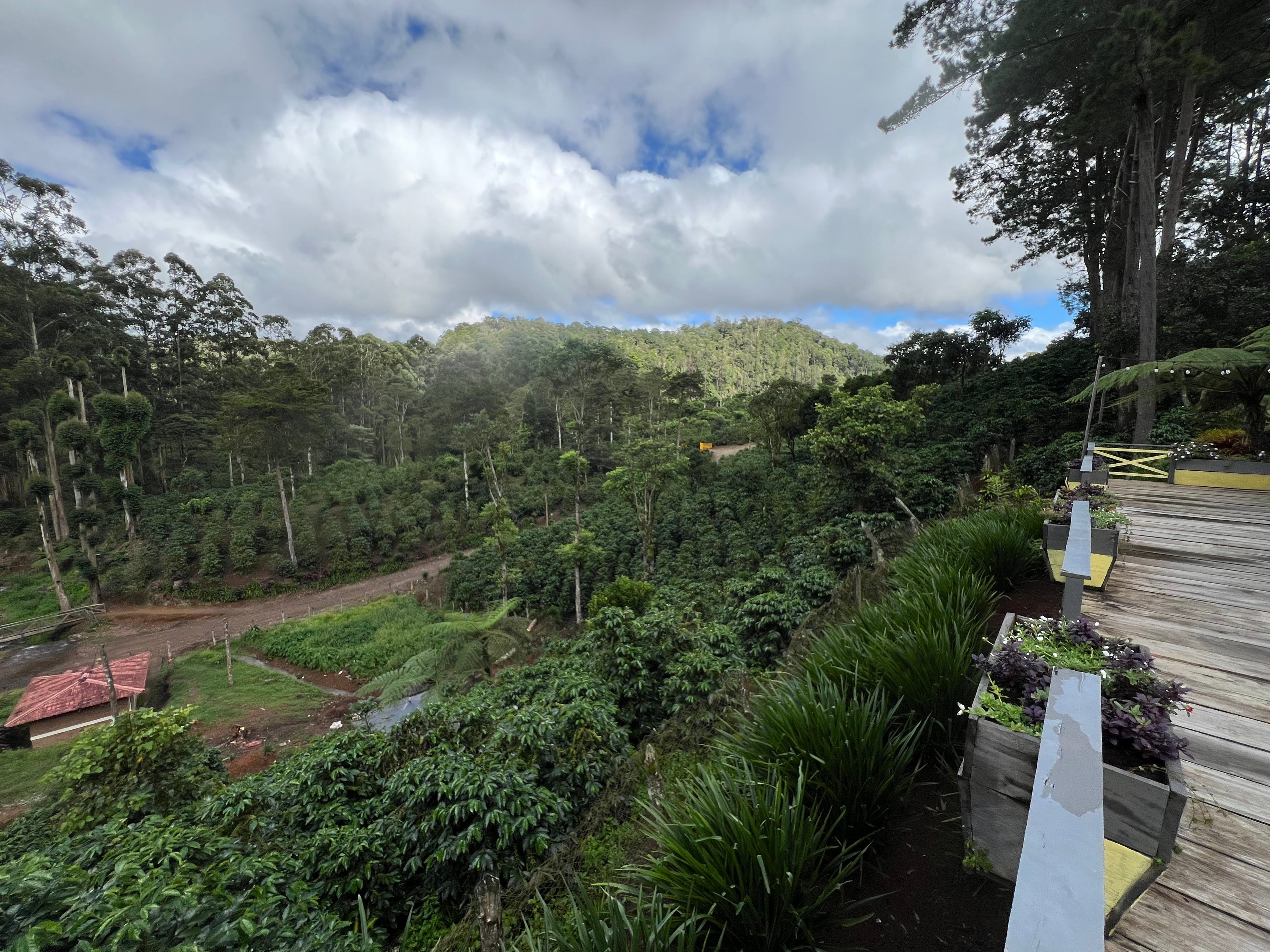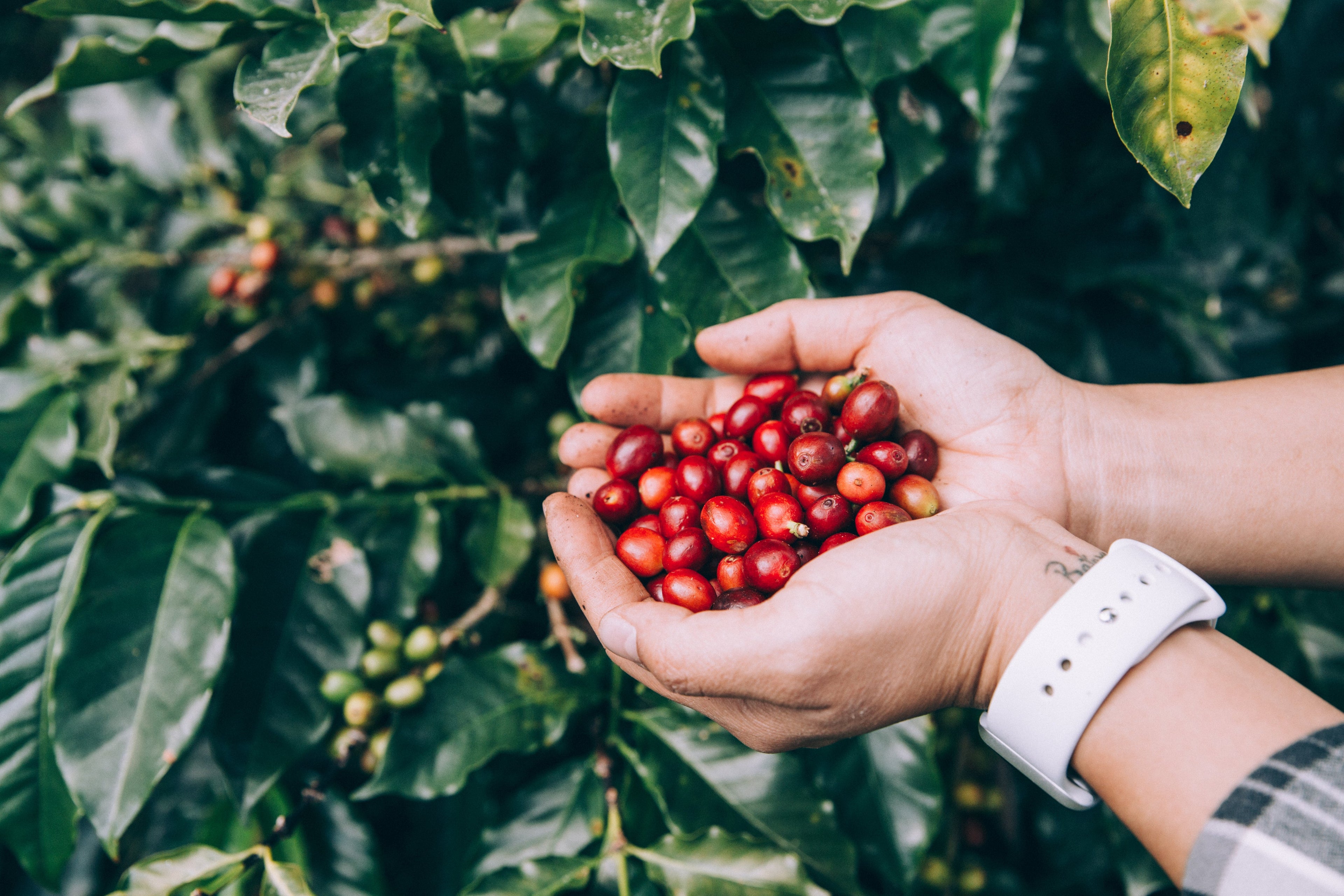The Mighty Coffee Bean
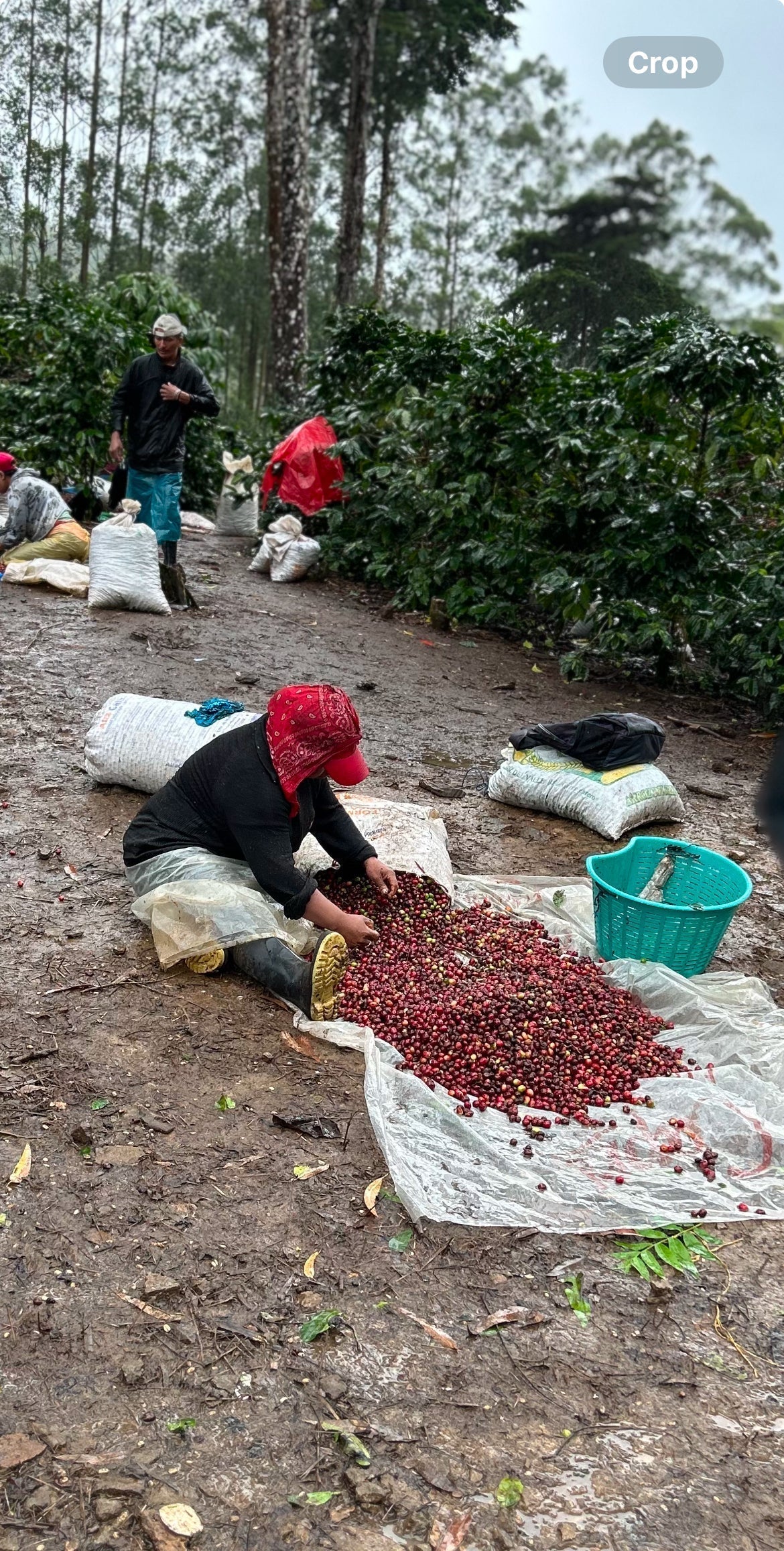
Greetings, coffee enthusiasts!
I'm writing to you from the heart of a vibrant rainforest, where the magic of coffee cultivation unfolds. Here, nestled amidst the mountains, the temperature hovers between a comfortable 58-78°F, fluctuating with the rhythm of cloudy, rainy days and the ever-present, ethereal fog. This unique microclimate, along with the altitude and rainfall, creates the ideal terroir for growing exceptional coffee.
Over the past few months, I've been immersed in the world of coffee, learning firsthand about the journey from seed to cup. Currently, we're in the midst of "el corte" (the harvest), which runs from December to February. This is the culmination of nine months of careful cultivation. It's a labor of love, as Arabica coffee plants require 3-4 years to reach full maturity and fruit production, and their productive lifespan ranges from 15-25 years, with yields naturally declining after 15-20 years.
Arabica, prized for its nuanced flavor profile and lower caffeine content, is the most widely cultivated varietal dominating the global coffee landscape. Its story is one of global travel, originating in Ethiopia and spreading across the Red Sea to present-day Yemen and Arabia in the 7th century. While Ethiopia is its birthplace, Brazil now leads the world in Arabica production. These beans flourish within the "Bean Belt," a region encompassing over 70 countries characterized by the specific altitude, temperature, and rainfall conducive to coffee cultivation.
The coffee bean, as you might know, is actually the seed of the coffee cherry, measuring just 9-11 mm, borne by the Coffea plant. Each cherry typically holds two beans, though occasionally, a single, rounded "peaberry" develops. The transformation from green bean to the aromatic brown bean we use for brewing occurs through the roasting process, unlocking the complex flavors within.
Following the harvest, the cherries undergo an initial sorting in the field to remove leaves, unripe green beans, twigs, and any defective cherries. They are then transported to our wet mill for the lavado (washing). This crucial step involves controlled fermentation and washing, processes that significantly influence the final flavor of the coffee.
Our dedicated team of pickers, many of whom are seasonal workers who join our permanent staff, play a crucial role in ensuring the quality of our harvest. They employ a meticulous "selective picking" method, carefully assessing each cherry for ripeness based on color, firmness, and ease of detachment. Only the perfectly ripe, bright and dark red cherries are harvested, ensuring uniformity and minimizing any harm to the trees and their surrounding ecosystem. From here, the selected coffee may undergo further processing, including the natural or honey (pulped natural) methods. These distinct post-harvest processes contribute unique characteristics to the final cup.
In my next blog post, I'll delve into the fascinating details of these primary processing methods – natural, honey, and washed – exploring the pros and cons of each.
In the meantime, I'd love to hear from you! If you have any questions, comments or feedback, please don't hesitate in reaching out, you can send me a direct message @elquetzal.coffee on Insta and/or ana@elquetzal.coffee. At El Quetzal Coffee Company, we're passionate about not only bringing you exceptional coffee but also sharing our knowledge and expertise.
Until next time, amigos!
Ana 🌱

